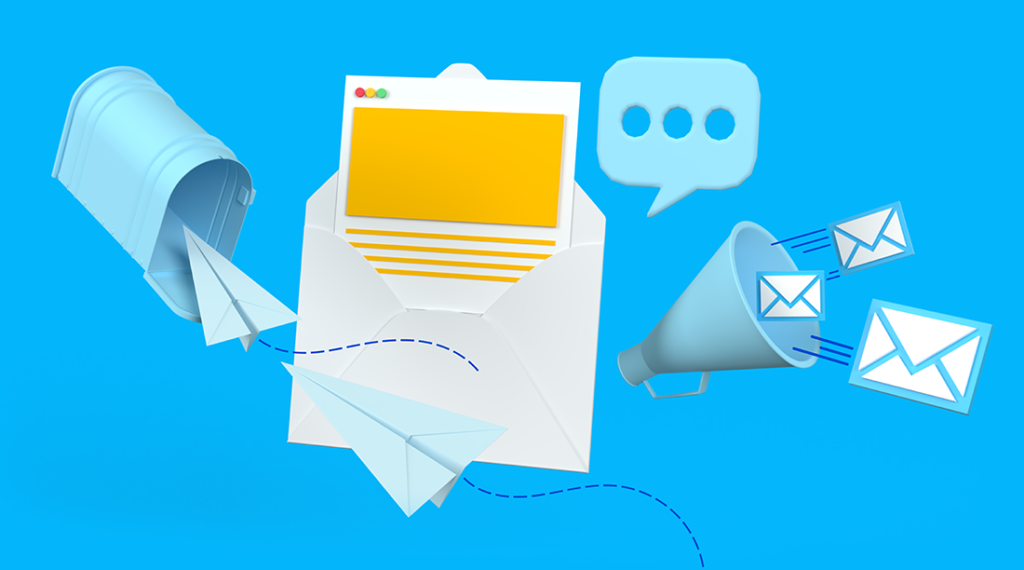Email marketing is still a powerful and budget-friendly means of engaging with your audience, creating engagement, and boosting sales. Yet, building a successful email campaign is more than simply sending “Send.”
In this guide, we will review the best practices, tips, and tools to assist you in building email campaigns that truly drive results.
What is an Email Marketing Campaign?
An email campaign is a planned series of messages sent by email to a list of recipients. The purpose can range—from product promotion and news sharing to lead nurturing or establishing brand recognition.
Each campaign will usually include:
A particular objective (e.g., sales, engagement, retention)
A targeted segment of audience
One or more emails dispatched over a specified time period
A quantifiable result (opens, clicks, conversions)
How to Run an Email Marketing Campaign
Operating an effective email campaign takes strategy, tools, and imagination. Here’s a quick breakdown:
1. Set a Clear Goal
Determine what you want the campaign to accomplish—sales, signups, traffic, feedback, etc.
2. Choose the Right Email Marketing Tool
Select a platform such as Mailchimp, Klaviyo, ConvertKit, or ActiveCampaign depending on your requirements.
3. Build and Segment Your Email List
Ensure you’re emailing people who want to hear from you. Use signup forms, landing pages, and lead magnets. Segment your list based on interests, behavior, or demographics.
4. Create Engaging Email Content
Write clear, valuable, and concise content. Include a strong subject line, compelling visuals, and a clear call-to-action (CTA).
5. Design for Mobile and Accessibility
Use responsive templates. Keep text legible, utilize alt text on images, and ensure your CTAs are easily clickable.
6. Schedule and Send
Send at most optimal time for your audience (usually mid-morning during weekdays). Some tools provide best send times based on user behavior.
7. Track Performance
Track performance metrics such as open rate, click-through rate, and conversions. Find out what worked and what didn’t.
8. Optimize and Repeat
Use your campaign learnings to refine your approach for improved performance the next time
Why Email Marketing Still Works
Email marketing has an average return on investment of $36 for every $1 spent, which means it is among the most lucrative channels of marketing. It provides direct access to your audience, and if executed properly, it can:
Nurture leads in the long term
Drive repeat buying
Boost brand loyalty
Provide personalized experiences
But to get these outcomes, you require a well-planned approach. So let us move further with best practices.
10 Best Practices for Email Marketing Success
1. Grow Your List the Right Way
Employ ethical, permission-based techniques to increase your list:
Add signup forms on high-traffic pages (home, blog, footer)
Use popups with timing or exit-intent triggers
Provide lead magnets such as free templates, checklists, or mini-courses
Promote your email list on social media and landing pages
2. Personalize Beyond Just the Name
Personalization extends far beyond “Hi [First Name]”.
Segment on:
Purchase history
Geographic location
Engagement level
Past behavior (clicked links, downloads)
You can also dynamically alter content in the email using these data points.
3. Set Clear Goals for Each Campaign
Before writing your email, ask yourself:
Is this campaign for sales, education, or re-engagement?
What’s the one thing I want users to do?
Having one goal in mind will allow you to create more targeted content and boost conversion.
4. Establish Consistent Branding
Each email must feel like it’s from your brand immediately. Be consistent in:
Logo positioning
Font usage and colors
Tone of voice
Signature or closing sentence
This creates familiarity and trust over time.
5. Leverage Automation to Nurture Leads
Marketing automation allows you to stay in touch without having to lift a finger every time. Think about automating:
Welcome series
Birthday or anniversary messages
Post-purchase follow-ups
Win-back campaigns
Tools such as Mailchimp, ActiveCampaign, or Klaviyo make this simple.
6. A/B Test Everything
To keep refining your campaigns, test:
Subject lines vs emojis or no emojis
CTA wording (e.g., “Buy Now” vs “See Deals”)
Send times (morning vs afternoon)
Layouts (image-heavy vs plain text)
Monitor what works and use those findings in subsequent emails.
7. Clean Your Email List Regularly
Inactive subscribers damage your open rates and sender reputation. Every few months:
Remove or re-engage cold subscribers
Check for hard bounces or spam traps
Send reactivation campaigns to lapsed users
8. Optimize Send Times for Your Audience
There’s no single, uniform answer, but overall trends are:
B2B: Tuesday to Thursday mornings (9–11 am)
B2C: Sends at night or over the weekend might do better
Use your platform’s analytics to determine the sweet spot for your list.
9. Use Scarcity & Urgency Wisely
Time-limited deals, countdown clocks, and product scarcity can get clicks—up to a point.
But they only work if they’re real.
Avoiding fake scarcity, instead support your offers with real deadlines or stock-low alerts.
10. Make Unsubscribing Easy
It seems counterintuitive, but making it easy to unsubscribe actually makes your list better and lowers spam complaints. Include a clear opt-out link in the footer, and respect the request immediately.
Tools to Supercharge Your Email Marketing
Here are some powerful tools to make email marketing easier and more effective:
Mailchimp – Great for beginners
Klaviyo – Best for ecommerce brands
ConvertKit – Great for creators and bloggers
ActiveCampaign – Top-notch automation capabilities
Litmus – Email testing and preview
Canva – Simple email banners and graphics
Conclusion :
Email marketing is not sending messages—It’s relationship building.Use these best practices, and you’ll: Increase open and click rates, Decrease unsubscribes and spam complaints,Drive real business outcomesWhether you’re emailing newsletters, promotions, or transactional emails, by following these tips, your emails will be noticeable and bring value every time.






